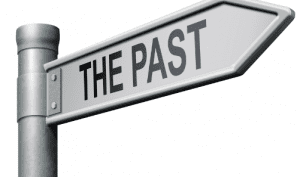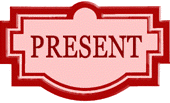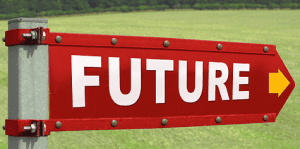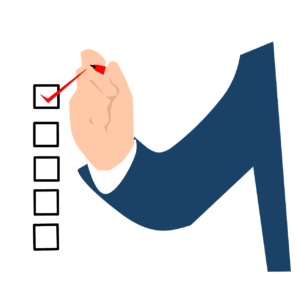 Flawed situational awareness (SA) is one of the leading contributing factors to first responder near-miss and casualty events. In fact, it is nearly impossible to find a line-of-duty death investigation report that does not implicate flawed SA, or one of the barriers that flaw SA, as contributing to the tragedy. As often as flawed SA is implicated it almost seems tragic how little first responders actually know about how to develop and maintain it, how it erodes, and how they regain it if it does erode.
Flawed situational awareness (SA) is one of the leading contributing factors to first responder near-miss and casualty events. In fact, it is nearly impossible to find a line-of-duty death investigation report that does not implicate flawed SA, or one of the barriers that flaw SA, as contributing to the tragedy. As often as flawed SA is implicated it almost seems tragic how little first responders actually know about how to develop and maintain it, how it erodes, and how they regain it if it does erode.
This article focuses on some aspects of the first two, developing and maintaining SA. I want to share a concept that might sound strangely familiar if you’ve ever seen or read Charles Dickens’ classic, Christmas Story, as we discuss Situational Awareness: Past, Present, and Future.
Let’s take a quick moment to refresh on the definition of situational awareness for any of our first-time readers:
Situational awareness (SA) is a person’s ability to perceive and understand what is happening in their environment, in the context of how time is passing, and then being able to make accurate predictions about future events… hopefully in time to prevent bad outcomes.
Based on the research of Dr. Micah Endsley, we know that SA is developed, maintained, eroded and regained on three levels:
Level 1 – Perception: Capturing clues and cues in the current environment.
Level 2 – Comprehension: Making sense of the clues and cues in the context of place and time.
Level 3 – Projection: Making predictions about future events.
Situational Awareness Past
 Every incident has a history – those events that occurred leading up to what you see when you arrive. It can be very helpful in the formation of situational awareness to attempt a mental reconstruction of the scene. As we talk about the formation of Level 3 situational awareness, we use the term Mental Modeling to describe how we construct “movies” in our head about how the incident will play out over a set period of time.
Every incident has a history – those events that occurred leading up to what you see when you arrive. It can be very helpful in the formation of situational awareness to attempt a mental reconstruction of the scene. As we talk about the formation of Level 3 situational awareness, we use the term Mental Modeling to describe how we construct “movies” in our head about how the incident will play out over a set period of time.
In the development of situational awareness past, think of it as running the mental models in reverse, or playing the moving backwards if you will; going back to how things looked when things were “normal” (i.e., before whatever it is that happened giving rise to you being called to the scene).
Every incident has a back story. A mental reconstruction can help you make sense of why things look as they do now or why things don’t look as you would have expected them to look. The back story can help with “sense-making” – understanding what you are seeing and/or hearing on your arrival.
Situational Awareness Present
 Situational awareness about the current situation is what most responders think of when SA comes to mind. It starts with the size-up (capturing clues and cues) and comprehending (understanding) meaning from them. There are two types of clues and cues responders make sense of – positive and negative clues and cues.
Situational awareness about the current situation is what most responders think of when SA comes to mind. It starts with the size-up (capturing clues and cues) and comprehending (understanding) meaning from them. There are two types of clues and cues responders make sense of – positive and negative clues and cues.
Positive clues and cues are those that are visible and/or audible. Negative clues and cues are those that are NOT visible and/or audible. Indeed, the absence of certain information can, unto itself, be a critical clue or cue. To form strong “Present” SA involves taking the positive clues and cues and plugging them into the “Past” SA in a fashion that makes the current situation make sense. If something does not make sense, that is a red flag and should warrant further investigation into why your understanding is not aligning.
Situational Awareness Future
 Future situational awareness is what Dr. Endsley termed Level 3 Situational Awareness and it’s rooted in a responder’s ability to predict future events. As with the SA Past, SA Future is developed through mental modeling – the construction of movies in the mind of the responder that script out future events.
Future situational awareness is what Dr. Endsley termed Level 3 Situational Awareness and it’s rooted in a responder’s ability to predict future events. As with the SA Past, SA Future is developed through mental modeling – the construction of movies in the mind of the responder that script out future events.
The reason that SA Past and SA Future depend on mental modeling is that neither can actually be observed. In the case of SA Past, the responder is modeling clues and cues that were present prior to arrival. In the case of SA Future, the responder is modeling clues and cues that have not yet occurred. Both require expertise and both require imagination.
Dr. Gasaway’s Advice
 Pre-planning and familiarization with your response area can assist in the formation of all three levels of SA. Pre-loading information in a calm, non-emergency environment can be especially helpful when trying to construct SA Past and SA Future.
Pre-planning and familiarization with your response area can assist in the formation of all three levels of SA. Pre-loading information in a calm, non-emergency environment can be especially helpful when trying to construct SA Past and SA Future.
Be a student of casualty events. In many instances, those who are hurt or killed didn’t see it coming. The more time you spend reviewing casualty incidents the better you’ll become at seeing it coming because each report you read or video you watch provides knowledge about how things can unfold in unexpected ways. This can be helpful in expecting the unexpected.
As you train, build in unexpected events. I recommend doing this ONLY after responders have achieved competency in the skill. Don’t complicate the initial stages of learning with unexpected events. After responders are well prepared for the expected, then start building unexpected things into training. This not only challenges their thinking and helps to make them resilient problem solvers but it also helps them form mental models around “what if” scenarios.
Action Items
 1. Read a casualty report where a responder was injured or killed. Ask yourself if you think they saw it coming. In most, if not all instances, the answer will be no. Then discuss how the development of SA Past, Present, and Future may have helped to change the outcome.
1. Read a casualty report where a responder was injured or killed. Ask yourself if you think they saw it coming. In most, if not all instances, the answer will be no. Then discuss how the development of SA Past, Present, and Future may have helped to change the outcome.
2. Pick a call where something unexpected happened. Discuss some possible explanations for why the responders did not see it coming. Share lessons about how SA Past, Present or Future may have helped prevent the surprise.
3. Pick a call where nothing unexpected happened. Discuss how SA Past, Present, and Future may have helped avert a surprise. Have the crew share what contributed to their strong SA.
About the Author
Richard B. Gasaway, PhD, CSP is widely considered a trusted authority on human factors, situational awareness and the high-risk decision making processes used in high-stress, high consequence work environments. He served 33 years on the front lines as a firefighter, EMT-Paramedic, company officer, training officer, fire chief and emergency incident commander. His doctoral research included the study of cognitive neuroscience to understand how human factors flaw situational awareness and impact high-risk decision making.
_____________________________________________________

If you are interested in taking your understanding of situational awareness and high-risk decision making to a higher level, check out the Situational Awareness Matters Online Academy.
CLICK HERE for details, enrollment options and pricing.
__________________________________
Share your comments on this article in the “Leave a Reply” box below. If you want to send me incident pictures, videos or have an idea you’d like me to research and write about, contact me. I really enjoy getting feedback and supportive messages from fellow first responders. It gives me the energy to work harder for you.
Let’s Get connected
Facebook: SAMatters
LinkedIn: Rich Gasaway
LinkedIn: Situational Awareness Matters
Twitter: Rich Gasaway
Youtube: SAMattersTV
itunes: SAMatters Radio
Stitcher Radio: SAMatters Radio
Google Play: SAMatters Radio
iHeart Radio: SAMatters Radio
